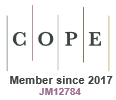Just Accepted
This article has been peer reviewed and accepted for publication. It is in production and has not been edited, so may differ from the final published form.
Plantain-mixed pasture collected in different climatic seasons produced less methane and ammonia than ryegrass-white clover pasture in vitro
Abstract
Context. Plantain (PL) is recognised for reducing nitrate leaching and nitrous oxide emissions in pastoral systems. Evidence has shown that cows fed pure PL produced less methane (CH4) than cows fed ryegrass. However, it is unclear if the CH4 reduction can be achieved with PL in mixed pasture. Aim. The study evaluated the in vitro rumen fermentation profiles of ryegrass-white clover (RWC) and medium-level PL (PLM, containing ~40% PL) pasture collected during different climatic seasons, to determine whether this inclusion level influences CH4 and rumen ammonia (NH3) production. Methods. Substrates were selected from samples with various proportions of PL. Samples were categorised into three climatic seasons (i.e., spring, summer, and autumn) and two pasture types (PLM and RWC). Representative samples for these scenarios were tested in an automated in vitro rumen batch culture system for gas, CH4 (mL/g DM) and NH3 (mmol/g DM) production. Key results. In summer samples, PLM produced around 8%, 14%, and 19% less CH4 at 12 hours, 24 hours, and potential CH4 production (PCH4), respectively (p<0.05). Although gas production (GP) was similar at 12 and 24 hours, PLM had 13% lower potential GP (PGP) than RWC (p<0.05). In spring samples, PLM had around 11% greater GP and CH4 production at 12 hours. For the autumn samples, GP and CH4 production were similar between PLM and RWC (p>0.05). Net NH3 production from PLM substrates was significantly lower in spring (27%) and autumn (17%) samples, with no differences in summer despite higher crude protein levels in the selected PLM. Conclusions. Compared to RWC, PLM changed rumen fermentation parameters that could translate to potential environmental benefits: PLM produced less net NH3 in spring and autumn samples (27% and 17%, respectively) and up to 19% less CH4 production in summer samples. Implications. Incorporating ~40% PL into RWC pasture showed promising reduction of CH4 emissions and nitrogen losses in vitro. If the in vitro results translate to cows grazing pasture this could offer greater environmental benefits with minimal input costs. In vitro results suggest that PLM’s potential to mitigate CH4 emissions can be influenced by seasonal variations in pasture quality compared to RWC. However, further animal studies are needed to fully comprehend the CH4 mitigation potential of this forage.
AN24287 Accepted 31 May 2025
© CSIRO 2025



